Renewable electricity
Our renewable supply options
We offer a range of renewable supply choices, allowing you to pick the right option for your business.
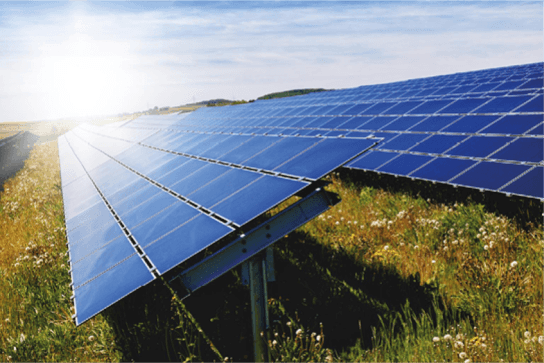
UK Renewable
Electricity generated from renewable sources in the UK, backed by REGOs.

Clean Renewable
Electricity generated in the UK from clean renewable sources. That's wind, solar and/or hydro, and backed by REGOs.
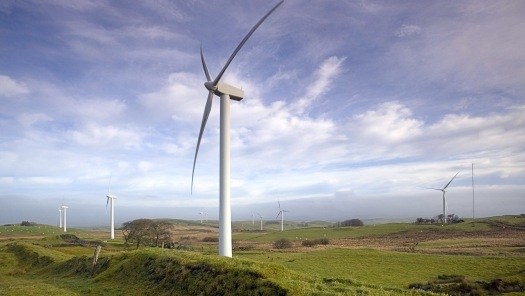
Select Renewable
Electricity supply sourced from a particular renewable technology or from a geographic region, offering a strong sustainability message.
Corporate PPA (CPPA)
Long term CPPAs enable price certainty for busineses as well as traceability and authenticity of the renewable supply.
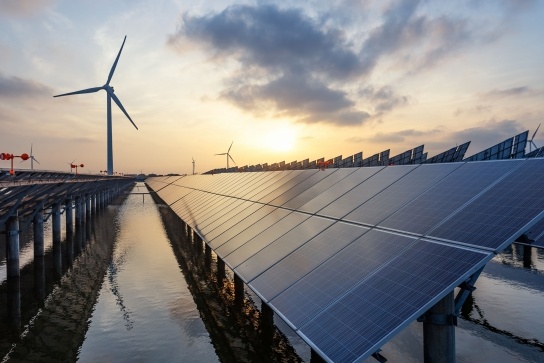
All from one of Europe’s largest renewable energy generators and purchasers
With 598MW of installed renewable generating capacity, we operate 31 wind farms in the UK with 8 more on the way. We're also a major purchaser of renewable electricity and offtake the most renewable electricity of any offtaker in Great Britain, through both equity-owned generation and capacity under PPA contracts. Cornwall Insight Feb 22
Talk to an expert about your energy
Fill out our quick form and we’ll be in touch to talk through the best tariff for you.
Matching Scotch Whisky distilleries to a local renewable energy source
What's the best way to buy renewable energy?
How can choosing a renewable supply help your business?
1. Pitching for new business
Businesses are finding that they’re asked for information on their environmental credentials more and more when they pitch for sales or contracts.
Consumers are also becoming increasingly aware of organisations’ sustainability credentials and factoring these in to their buying decisions.
By choosing a renewable supply, your business can show it’s made an informed choice – to run on electricity backed by renewable generation.
2. Reporting your carbon emissions
Choosing a renewable energy supply allows you to report zero carbon emissions for your electricity supply. Besides showing you’ve made an informed choice, it also lets your business report a lower carbon footprint.
If your business follows global best practice and reports its carbon emissions using the Greenhouse Gas Protocol (The GHG Protocol), your choice of electricity supply can make a big difference to the numbers you report. This is particularly important for larger businesses who have corporate social responsibility ambitions to join strategic initiatives like the RE100*.
*Source: there100.org/re100
3. Assuring investors and shareholders
Investors are increasingly looking to only invest in companies committed to reducing their environmental impact. CDP (formerly the Carbon Disclosure Project) tracks thousands of companies’ climate change strategies and emissions reduction performance to help institutional investors understand the risk in their portfolios. These investors hold assets worth over US$92 trillion*.
The CDP uses the GHG Protocol as the method for companies to report their emissions. Choosing a renewable electricity supply can support your performance in their assessment process.
*Source: www.cdp.net/en/info/about-us
Independently verified for extra confidence
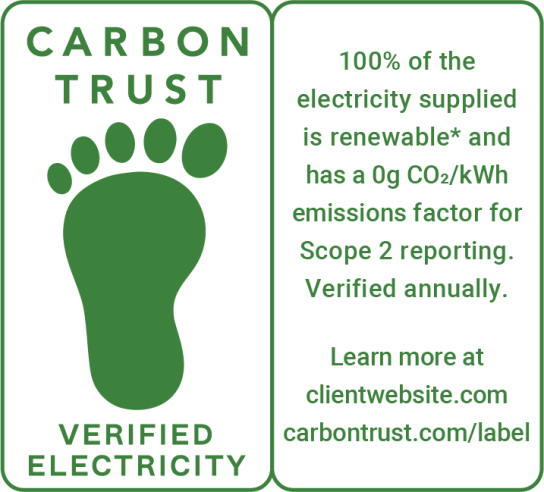
To give you added confidence, The Carbon Trust has assured that the electricity supplied for the year ended in 31st March 2023 under the following products – Renewable for Business, Select Renewable, Clean Renewable and UK Renewable – all of which are under the umbrella of the “Renewable tariffs” is 100% covered by Renewable Certificates that have been obtained and retired by EDF, in line with the WRI GHG Protocol Scope 2 Guidance (2015).
*100% of the electricity supplied is renewable, backed by certificates of renewable energy guarantees of origin. The emission factor conforms with the GHG Protocol Scope 2 guidance and may be used for the 'market-based' method.
Are you an energy generator?
If you have energy you'd like to sell us, take a look at our selling pages.
Choose the best renewable energy supply for your business
Companies are rushing to cut carbon emissions and switch to renewable energy. But it’s not like flicking a switch. There’s a surprising number of factors to weigh up as you choose the renewable energy sourcing strategy that’s best for your business. Andy Peyman outlines the various clean energy sourcing strategies for businesses and explains their relative pros and cons. Want more detail? Watch our webinar where Andy dives deeper into the world of renewables.
Renewable electricity, the facts
Report zero carbon emissions from your purchased electricity
Modern carbon reporting standards like the GHG Protocol require organisations to base their carbon emissions reporting on the choice they make for their electricity purchases (called “market-based emissions”), as well as their grid connection (called “location-based emissions”). The idea is that using both numbers gives a fairer, more complete picture of an organisation’s efforts to reduce its carbon emissions by choosing to purchase low-carbon electricity or being more energy efficient.
With our renewable electricity options, your organisation’s electricity supply is backed by certified renewable generation sources which all have a zero emissions rating. That takes your marketbased carbon emissions to zero, and with climate change now a mainstream issue, that can only help your business.
Available for both fixed and flexible price supply contracts, our renewable options are backed by REGOs (Renewable Energy Guarantees of Origins). The REGO scheme is administered by Ofgem and is used to provide transparency to consumers about the proportion of electricity that suppliers source from renewable generation in the UK.
- Each megawatt-hour (MWh) is evidenced by a REGO.
- The purpose of the certificate is to prove that a given share of energy was produced from renewable sources.
Compare your options
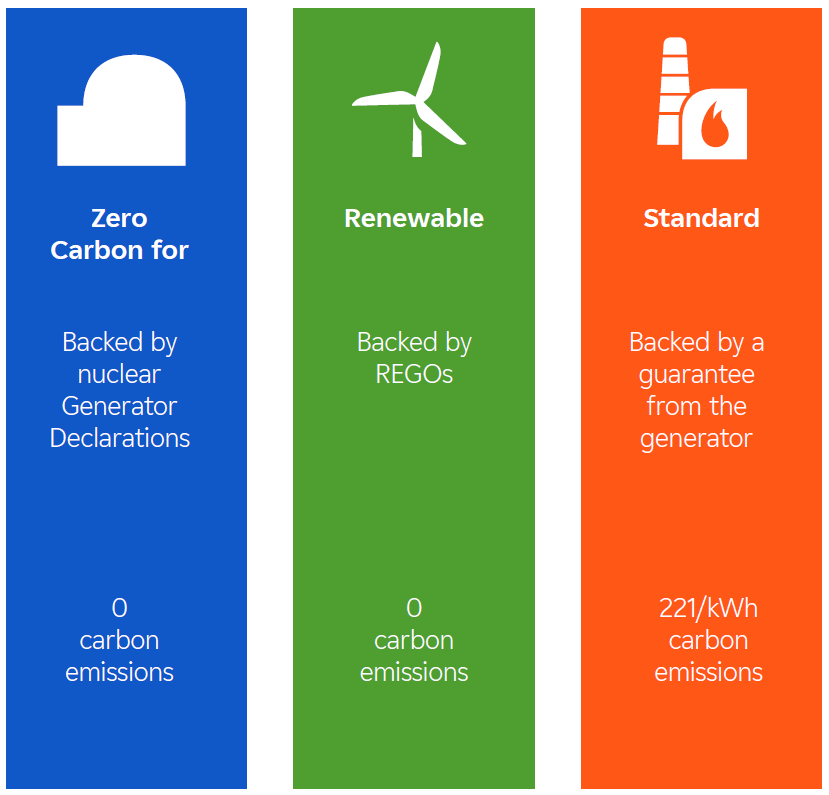
How our renewable supply options compare with our Zero Carbon for Business and standard offers
Modern carbon reporting standards encourage businesses to use their choice of electricity supply to support their environmental commitments.
We offer three electricity source choices:
- Standard: backed by all electricity generation technologies from lower carbon renewables and nuclear, to higher carbon coal and gas.
- Renewable: backed by Renewable Energy Guarantees of Origin (REGOs).
- Zero Carbon for Business: backed by nuclear generation.(formerly Blue for Business)
Buying zero carbon does not create more zero carbon energy in the UK
It’s important to be clear about this. Whether you choose a zero carbon supply backed by renewable or nuclear energy, your purchase does not in itself cause any new zero carbon generation to be produced. The zero carbon electricity that we buy for Zero Carbon for Business or renewable products is supplied into the National Grid. Customers receive that electricity through the National Grid, not directly from zero carbon generators.
But your choice does show that your organisation is aware of the carbon intensity of the power it buys and is consistent with widely used standards and guidance in carbon accounting*. And that’s a step in the right direction.
Our fuel mix
On the 1st of October every year, we must publish details of the fuel sources that have been used to generate the electricity we supply to our customers.
We update the below table to show how much (%) of the energy we’ve purchased and supplied to our customers has come from each of the major energy sources in the previous year (between April and March). We also include the carbon emissions associated with its generation, and show how our fuel mix compares to the UK average fuel mix.
Our customers’ electricity is sourced from our own UK power stations, the wholesale energy market and other independent power generators. We are a major supporter of independent renewable generators.
The information in the table below covers our supply licence for EDF Energy Customers Ltd for the period from April 2022 to March 2023. Our fuel mix for the period April 2023 to March 2024 will be published on 1 October 2024.
| Coal | Gas | Nuclear | Renewable | Other | CO2 g/kWh | Radioactive waste g/kWh | |
|---|---|---|---|---|---|---|---|
| EDF's fuel mix | 1.6% | 16.7% | 59.4% | 21.0% | 1.3% | 87 | 0.0042 |
| Contribution to our carbon emissions | 17.4% | 71.0% | 0.0% | 0.0% | 11.6% | ||
| UK average fuel mix | 3.4% | 39.3% | 13.9% | 40.8% | 2.6% | 186 | 0.0010 |
The figures for the UK average fuel mix are provided by the Department for Energy Security and Net Zero (DESNZ). Depending on the tariff you are on, the fuel source and the carbon emissions associated with the generation of your electricity may vary.
| EDF’s fuel mix per tariff or product | Coal | Gas | Nuclear | Renewable | Other | C02 g/kWh | Radioactive waste g/kWh |
|---|---|---|---|---|---|---|---|
| Zero carbon (1) | 0.0% | 0.0% | 100% | 0.0% | 0.0% | 0 | 0.0070 |
| Renewable (2) | 0.0% | 0.0% | 0.0% | 100% | 0.0% | 0 | 0.0000 |
| All other (3) | 2.9% | 30.4% | 57.9% | 6.5% | 2.3% | 159 | 0.0041 |
Product table
(1) Zero carbon: Zero carbon tariffs and products include any sold as ‘nuclear backed’, such as Zero Carbon for Business (formerly Blue for Business).
(2) Renewable: All renewable tariffs and products.
(3) All other: All other tariffs and products - tariffs not referred to as Zero Carbon or Renewable.
The nuclear backed and renewable electricity that we buy for Residential, SME, Zero Carbon for Business (formerly Blue for Business) or Renewable tariffs and products is supplied into the National Grid. Customers receive that electricity through the National Grid, not directly from zero-carbon generators.